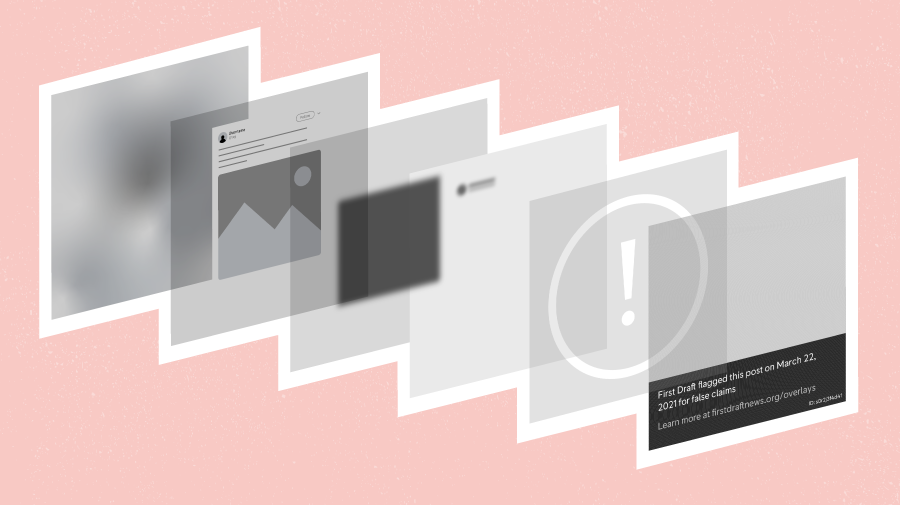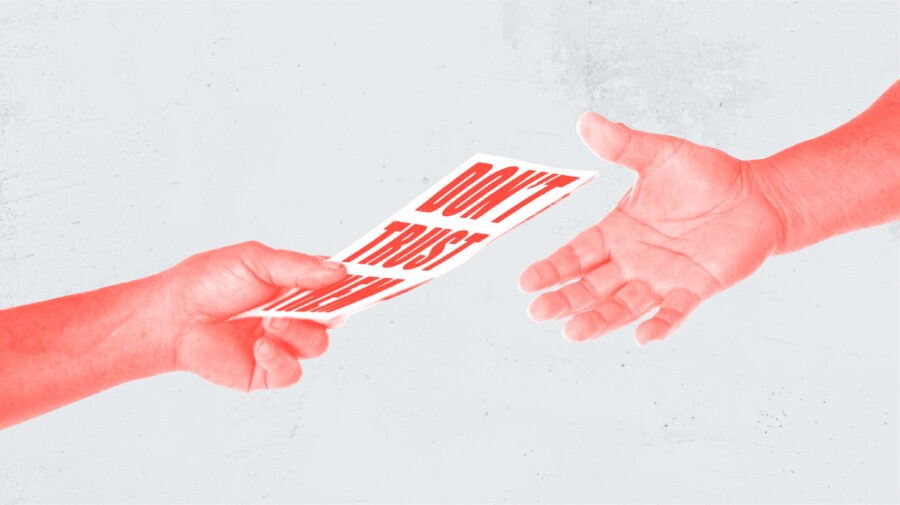What is an overlay?
An overlay is a visual filter that covers an image that contains misinformation. Overlays are used by journalists when misinformation is featured in an article.
Why do we use them?
Journalists often need to include visual examples of misinformation in their stories. This might be to provide evidence for a point, to give readers a more vivid picture of what is being described, or simply to make stories more engaging and memorable.
However, those trying to push disinformation benefit from coverage of their content, so including examples can extend their reach. What’s more, seeing misinformation can be harmful in and of itself, amplifying its messages and emotional triggers.
Overlays therefore have three purposes:
- diminish the effects of the misinformation
- prevent the image re-circulating out of context and causing further harm
- protect individuals’ identity where appropriate
When do we apply overlays?
We use overlays for visual examples of misinformation that we believe have the potential to cause harm, including: false or misleading claims, genuine content shared with a false or misleading context, manipulated content, hate speech, harassment and graphic imagery.
We blur information for content that:
- comes from non-public figures, blurring personally identifiable information
- is graphic or could otherwise be distressing for readers, blurring out the potentially distressing parts (and adding a written content warning in the context marker).
If you have questions, please get in touch at contact@firstdraftnews.com






